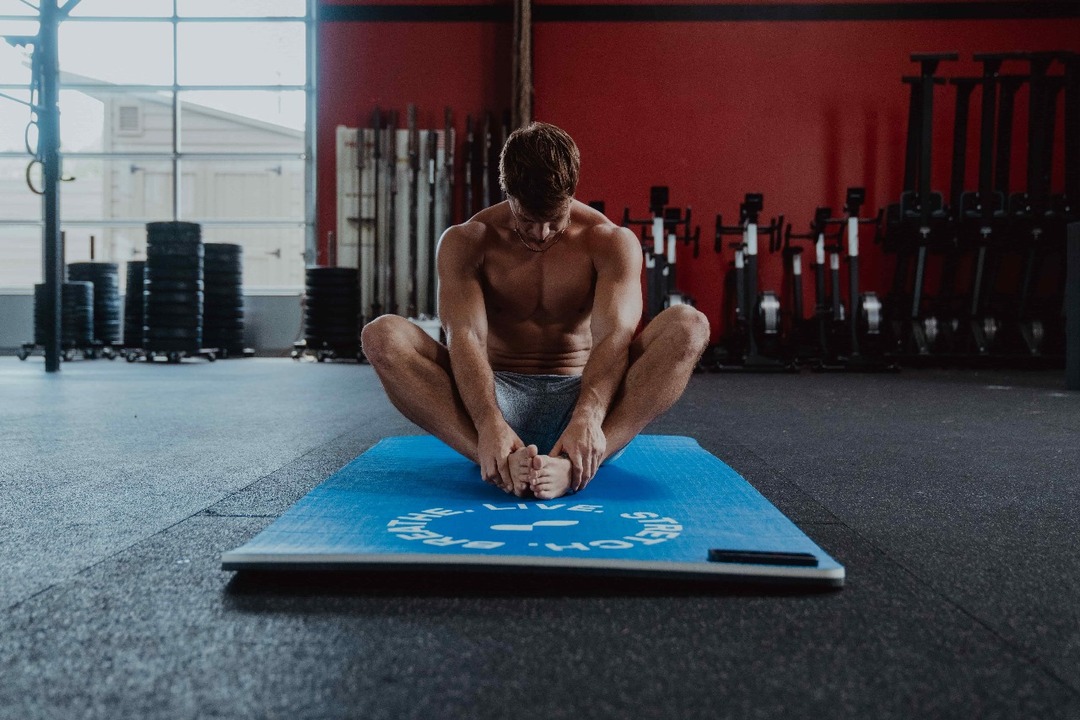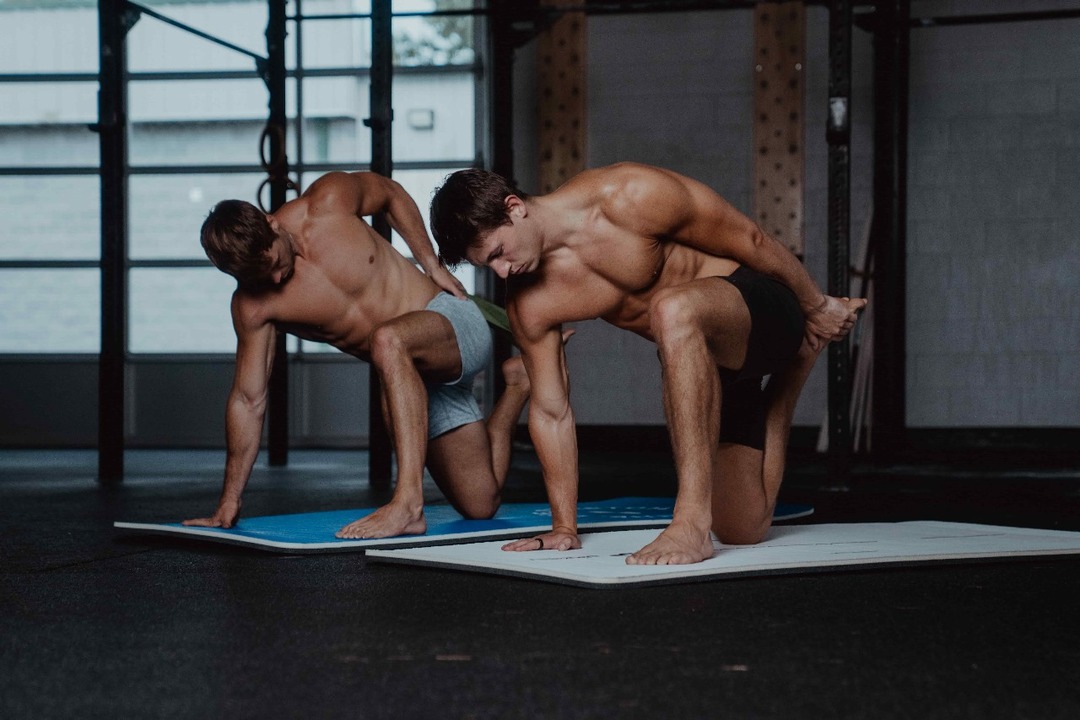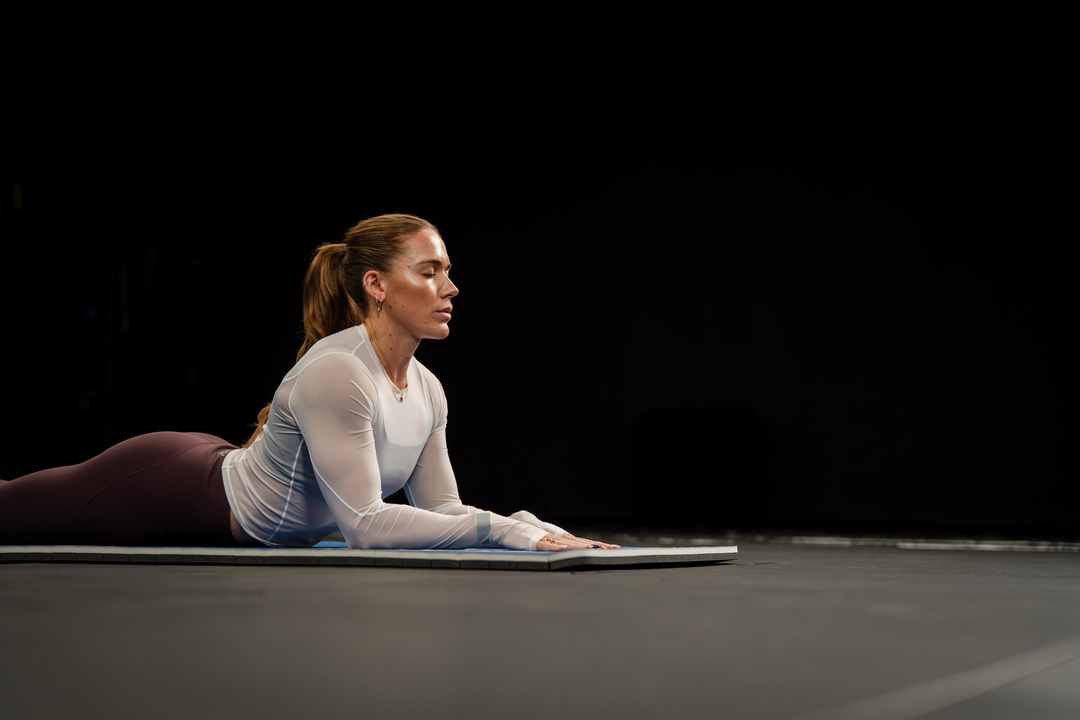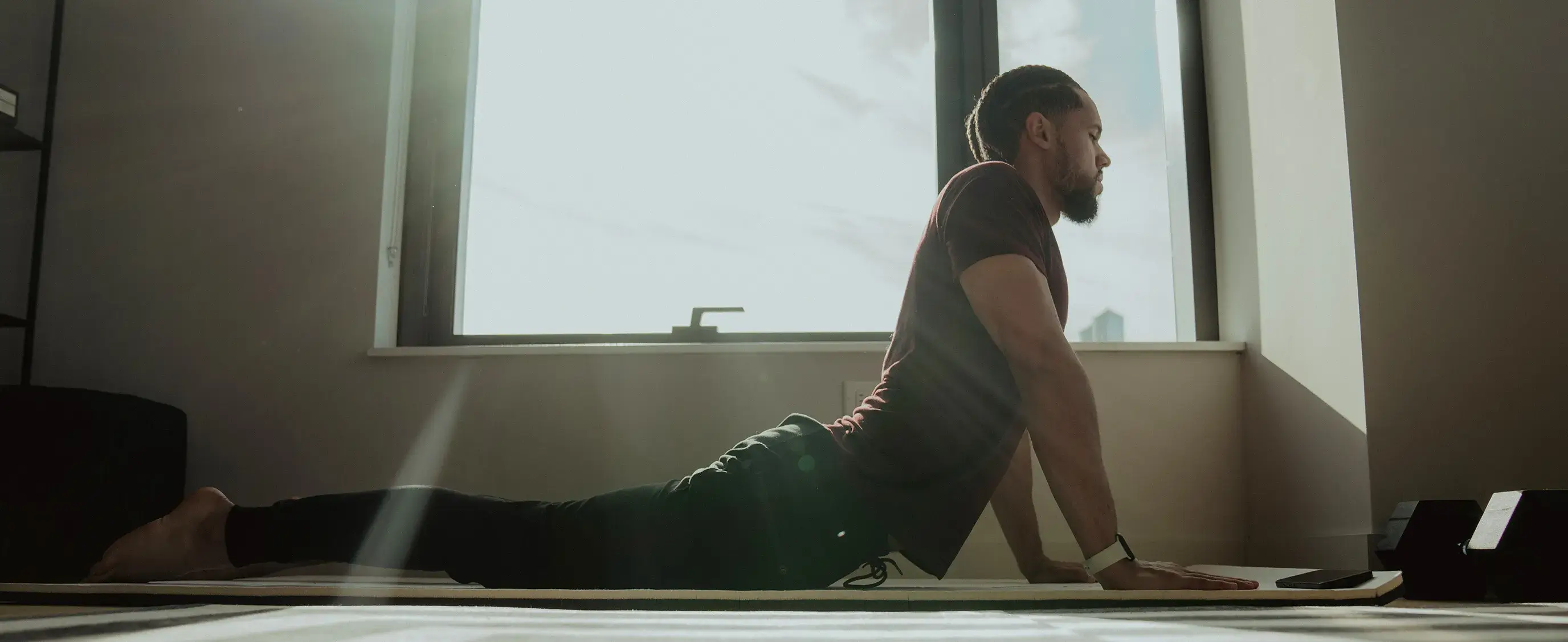Stiffness can make everyday activities like reaching for something on a high shelf or getting up off the floor uncomfortable and even painful. It can create a sense of vulnerability and hold you back from participating in the activities you enjoy most. Improving your flexibility can help you better perform daily activities, reduce your risk of injury, enhance your athletic performance, and improve your overall quality of life. Want to learn how to get flexible fast? This article will show you how to achieve increased flexibility quickly and effectively through a structured approach that fits into your daily routine.
Pliability's mobility app is a valuable tool for reaching flexibility goals. This easy-to-use app provides a clear path to improving flexibility, reducing muscle soreness, and recovering faster.
What Flexibility Is and Isn’t

Flexibility is the ability of a joint or series of joints to move through an unrestricted, pain-free range of motion. Although flexibility varies widely from person to person, minimum ranges are necessary for maintaining joint and total body health. Many variables affect the loss of normal joint flexibility, including:
- Injury
- Inactivity
- Lack of stretching
The range of motion will be influenced by the mobility of the soft tissues that surround the joint. These soft tissues include:
- Muscles
- Ligaments
- Tendons
- Joint capsules
- Skin
A lack of stretching, especially when combined with activity, can lead to a fatigue-induced soft tissue shortening over time.
The Impact of Inadequate Flexibility on Joint Health, Muscle Fatigue, and Injury Prevention
Inadequate flexibility will negatively affect the body in three significant ways. Joints require movement through a full range of motion to maintain the health of cartilage and other structures within the joint. This requires an increased blood supply and nutrients for joint structures and an increased quantity of synovial joint fluid (oil in the crankcase). This effect can be particularly noticeable in weight-bearing joints such as the hips and knees.
Inflexible muscles tire more quickly, causing opposing muscle groups to work harder. Muscle fatigue can lead to muscular injuries and the inability of the muscles to protect joints from more severe injuries. For example, the hamstrings play a role in stabilizing the knee and preventing ACL tears. Decreased flexibility may also lead to abnormal stress on structures and tissues distant from the initial site of inflexibility. One example is tendonitis in the knee, which can be related to calf tightness.
Why Do We Lose Flexibility?
You may remember being more flexible when you were younger. So, you might think that age is the main culprit for becoming stiff. And, yes, age is a factor. As Lawton points out, combining other factors can also cause you to lose flexibility. As we age, our lifestyles change, affecting how much we use our flexibility.
"I don't know if it’s the aging or the amount of work that we do sitting behind a computer that’s creating a lot of that tightness," exercise physiologist Katie Lawton, MEd poses.
Losing flexibility over time can happen for many reasons, including:
- Sitting for long periods
- Aging
- Injury
- Inactivity
- Stress
- Genetics
- Medical conditions
"Sitting for long periods of time actually shortens up a lot of those muscles," she adds. This can affect the flexibility of our:
- Hips
- Hamstrings
- Even our mid-back or chest muscles
Flexibility vs. Mobility: What’s the Difference?
Many have heard flexibility and mobility, both health and fitness industry buzzwords. You might not know that they don’t mean the same thing.
Mobility is dynamic or active, whereas flexibility is passive. For example, flexibility is when you can pull your thumb back with your other hand so it touches your wrist. In contrast, mobility is the ability to get your thumb to that same spot on your wrist without the help of the other hand.
The Relationship Between Flexibility and Mobility: Why Stretching Alone Isn’t Enough
Flexibility can be achieved when you "stretch" (e.g., holding a static position for 30 – 60 seconds), and your muscles relax and lengthen. This form of stretching reduces tension and nervous system activity in those muscles. Stretching may be a good idea after a workout, but it should not be indicated immediately.
In short, part of good mobility is good flexibility. But being flexible doesn’t mean your mobility is up to par, and vice versa. Flexibility is just one piece of the mobility puzzle.
Related Reading
- Does Stretching Help You Lose Weight
- How to Release Tight Muscles
- Is Stretching Good for Arthritis
- Is Yoga Good for Stretching
- Morning Stretching Routine for Beginners
- Benefits of Stretching in the Morning
- Mobility Stretching Routine
- Daily Stretch Routine for Flexibility
- Daily Stretching Routine for Men
- Mobility Exercise Routine
How to Get Flexible Fast

1. Define Your Flexibility Goals So You Have a Target to Work Toward
First, clarify why you want to stretch and improve your flexibility. There are many reasons to stretch.
- Decreasing muscle soreness after a workout
- Decreasing risk of injury.
- Improving performance
- Improving range of motion
- Reducing pain
It may be surprising to learn that the benefits of stretching are controversial and far from conclusive. There is a fair amount of evidence that stretching isn’t as helpful as you’d think for decreasing pain and the chance of injury. In this article, the author concludes that stretching is only suitable for improving flexibility… and “feels pleasant.”
Finding Personal Motivation: Identifying When and Why You Need to Stretch
Well, frankly, those are the only reasons to stretch! Our stance on flexibility work is that “if you cannot actively attain a position you’d like, then you need to find a way to get to that range of motion.” Yes, it is that simple. So, how do you know if you need to stretch? I must stretch if I have poor form in a handstand because my arms don’t fully raise above my head. If I want to play with my kids, I need to pull if I have trouble getting down on the floor because I’m too tight.
As we’ve said before, I have to find the right motivation. Many people may tell you “that you MUST stretch” for various reasons, but don’t worry about it. Instead, focus on what motivates you.
Find your reason. That will get you to your objective much quicker and take you much further than some other contrived justification.
2. Identify Your Flexibility Limitations
Once you have that goal in mind, you’ll want to discover what hinders you from achieving it.
And it’s much more than “I have to stretch out more.” Sure, I do, but do I know which muscles to stretch? All of them? That would take a pretty long time! I have difficulty bending to touch my toes, suggesting hamstrings are too tight. However, quite a few other things could be restrictors, such as:
- Lower back
- Hip flexors
- Glutes, etc.
So, I’ll need an excellent way to quickly assess what explicitly binds up my movement.
The best way to do that is to go through a targeted series of positions that test my whole body and note where I feel most restricted. We call these Basic Assessment Positions.
I developed this series of Basic Assessment Positions (BAPs) as a quick and efficient way for people to self-assess their entire body and perhaps even discover areas they didn’t know were so restricted.
- Squat
- Cross Legged Sitting
- Long sitting
- Supine Hip/Knee Flexion
- Hooklying Crossleg Hip Rotation
- Shoulder Combined Motions
- Prone Backbending
- Neck Motions
By starting with the most noticeable restrictions, I’ll probably notice other body parts moving more freely. It’s like untangling a rope—the rest quickly unravels once I find the primary knot.
So, the stretching I do will make the best use of my time since I’ll be working on the most critical stretches that meet my needs.
3. Slow Down to Get Flexible Faster
The difficulty with being flexible as quickly as possible is that most people need to tone it down.
You don’t improve stretching tolerance by going so far with a stretch that it hurts. That would likely impede your progress. Drawing back from a painful stimulus is a reflexive and conscious action.
The inability to move in a specific range of motion because of “tightness” can be related to several factors:
- Soft tissue scarring (actual structural adhesions preventing motion)
- Joint hypomobility (restrictions at the joint itself due to injury or congenital factors)
- Higher resting muscle tone (the muscle’s resistance to stretch at rest)
The first two factors are best addressed by consulting a professional in person, but the last explains why most people must take their stretching regimen a bit more slowly.
Muscle Tone, Not Intensity, Determines Your Flexibility Gains
Though some medical conditions can cause very high muscle tone, most people have varying degrees of this level, which explains why some people are naturally more or less flexible than others. It’s only natural to go for intensity when I exercise and focus on a goal. This is great for pushing through fatigue to build stamina and endurance. But for improving flexibility, fighting this natural tone is a losing battle. Instead, I should coax my body into improved flexibility. Easing into it rather than going “hardcore” will yield better results.
Here’s why:
Across the board, clients who have listened to this advice are achieving much better success.
I took my time and focused on Jarlo’s advice not to push. Toward the end, I began to feel how my muscles would resist straight pushing but relax into softer, rhythmic pushing cycles, which made me more profound. It was a lovely session.
– Kevin K.
There are periods when pushing myself harder into the stretched position is helpful, but these are at more advanced levels of flexibility training. They will by no means be the majority of my training. They are done a small percentage of the time to make a small percentage of gains. I don't need to use this style if I feel so tight that I have trouble touching my toes.
4. Follow Your Plan Consistently
I’ve now figured out my personal goal, identified my restrictions, and improved my approach to stretching by toning it down. The last but not least minor thing to do is follow a consistent plan of attack and do it as regularly as possible.
My plan has been formed based on my personal goals and mobility restrictions. The gains from this plan build-up from session to session, and that’s a matter of consistent practice and giving my body a chance to adapt to those gains.
5. Get Specific with Your Stretching Routine
The answers to what I need to do to improve my flexibility lie within me and my current condition and specific needs.
6. Start and End Each Day with Static Stretches
Holding static stretches may be the simplest method of improving flexibility. Static stretching includes all flexibility exercises that involve holding a muscle in a stretched position for a substantial amount of time, usually around 30 seconds. This allows me to isolate and deeply stretch a muscle. Starting and ending my day with static stretches—just 5 to 10 minutes—can make a big difference in how flexible my muscles feel daily.
Static stretches you might already be familiar with include:
- Forward fold (touching my toes)
- Standing quad stretch
- Cross-body shoulder stretch
- Seated single-leg hamstring stretch
- Triceps stretch
- Seated twist
- Butterfly stretch
- Child's pose
- Overhead side reach
Some advanced static stretches include:
- Pigeon pose
- Figure four
- Plow pose
7. Perform Dynamic Stretches Before and After You Exercise
Dynamic stretches, in contrast to static stretches, continuously move my muscles and joints through their full range of motion. This type of stretching feels much more vigorous than static stretching and may even get my heart rate up.
Dynamic stretching doesn't isolate muscles as much as static stretching; instead, this type of active stretching works multiple muscles simultaneously and teaches me how to engage my muscles and joints to support deeper and more fluid motion. Performing dynamic stretches before my workout makes for a good warmup, and engaging in a few after my workout helps return my body to its resting state (rather than just stopping cold after an intense sweat).
Examples of dynamic stretches include:
- Cat-cow pose
- Squat-to-stand
- Downward dog to cobra
- Kneeling lunge stretch
- Cossack squats
- Walking knee-to-chest
- Toy soldiers
- Iron cross and scorpion
- Wall angels
8. Mash Your Muscles a Few Times Each Week
I might feel inflexible due to adhesions in my fascia, a connective tissue covering my muscles, bones, and joints. What people refer to as "muscle knots" often actually occur in the fascia (though my muscle tissue can also develop knotty areas).
If I have a lot of these adhesions, which can develop from long periods of sedentary behavior as well as from intense physical activity, I try adding self-myofascial release to my routine. Self-myofascial release is essentially self-massage to "release" those tight knots from my body tissues. I can do self-myofascial release with a:
- Foam roller
- A lacrosse ball
- A muscle roller
- A massage gun
These myofascial release exercises can help:
- Foam roller sit-ups
- Foot rolls with a lacrosse ball
- Figure four stretch on a lacrosse ball
- Quadriceps foam roll
- Hamstrings foam roll
- Calf rolls with a lacrosse ball or foam roller
9. Practice rotational movements
My ability or inability to fully rotate my spine and ball-and-socket joints (hips and shoulders) greatly influences my overall flexibility level. My spine, hips, and shoulders dictate most of my daily movements, whether I realize it or not: Every time I step, reach, bend, turn, sit, or stand, I use my spine along with my hips or shoulders. If I actively practice rotating these joints, I'm gaining out on my potential for flexibility.
Try these rotational exercises to improve flexibility:
- Shoulder internal and external rotation
- Shoulder upward external rotation
- Seated hip internal and external rotation
- Standing hip internal and external rotation
- Shinbox
- Windmills
- Seated spinal twist (alternating)
If you're feeling limited by pain or your ability to move, Pliability aims to complement your fitness routine and help you move better. Sign up today for 7 days for free on:
- iPhone
- iPad
- Android
- Or our website to improve: some text
- Flexibility
- Aid recovery
- Reduce pain
- Enhance range of motion with our mobility app
Related Reading
- Hamstring Stetches
- Quad Stretches
- Ballistic Stretching
- Thigh Stretches
- Chest Stretches
- Types of Stretches
- Dynamic vs Static Stretching
- Best Apps for Stretching
- Best Mobility Stretches
- Best Lower Body Stretches
- Best Stretches for Athletes
- Stretches for Arms
Sample Whole Body Flexibility Training Program
-min.jpeg)
This flexible program contains eleven basic stretches. Most stretches are general, and you may have done them before. These stretches will help improve your flexibility quickly!
1. Flexion and Extension
- From a sitting or standing position, begin with the neck upright.
- Flex your neck by tucking your chin towards the chest. If your chin touches the chest, attempt to touch the chin further down the chest.
- Hold this position for 20-30 seconds.
- Extend your neck trying to bring the back of the head as close to the back as possible.
- Hold this position for 20-30 seconds.
2. Left and Right Look
- From a sitting or standing position, begin with the neck upright.
- Turn your head to the right and hold this position for 20-30 seconds.
- Turn your head to the left and hold this position for 20-30 seconds.
3. Lateral Shoulder and Upper Back
- From a sitting or standing position, raise your right arm to shoulder height.
- Flex your right arm across to the left shoulder.
- Grasp your raised arm just above the elbow with your left hand.
- Exhale and pull your raised arm across your chest.
- Hold this position for 20-30 seconds and repeat on the opposite side.
4. Triceps
- From a sitting or standing position, raise and flex your right arm overhead next to your ear.
- You should reach your right hand towards your scapula.
- With your left hand grasp your right elbow, exhale, and pull your right elbow behind your head.
- Hold this position for 20-30 seconds, and repeat on the opposite side.
5. Chest and Shoulders
- From a standing position, face the edge of a door frame or corner of a wall.
- Flex your right arm at the elbow and place your hand on the wall or frame.
- Exhale and lean forward.
- Hold this position for 20-30 seconds and repeat on the opposite side.
Note: You can do both arms simultaneously when using a door frame.
6. Torso
- From a standing position, place your feet shoulder width apart.
- You may place your left arm on your hip and raise your right arm over your head, or raise both arms over your head and interlock your fingers.
- Keep your right arm straight (or both arms if used) and lean from your waist to the left side.
- Hold this position for 20-30 seconds and repeat on the opposite side.
Note: Do not lock your knees but do not allow them to bend as you lean to each side.
7. Groin
- From a sitting position keep your body near vertical. You may choose buttocks and lower back against a wall.
- Flex your knees with your legs spread pulling your feet towards your body and place your heels together.
- Place your hands on the inner thighs or knees, exhale and press your legs towards the floor.
- Hold this position for 20-30 seconds.
Note: You may use your hands to hold your heels together and press your legs floor with your elbows.
8. Hips
- Lay on your back with legs flat on the floor.
- Bring your right thigh close to your chest by flexing your knee and hip.
- Exhale and with both hands placed behind the thigh, pull your knee closer to your chest.
- Hold this position for 20-30 seconds and repeat on the opposite side.
9. Hamstrings
- From a standing position, raise your right leg and place it upon a stable, elevated surface at a comfortable height.
- Exhale while you bend your left leg slightly, then lean forward and round your back.
- Hold this position for 20-30 seconds and repeat with the opposite leg.
10. Quadriceps
- From a standing position place one hand about shoulder height up against a wall or stable surface.
- Reach back with the opposite hand and grab the ankle on the same side.
- Exhale and slowly pull your heel toward your buttocks while avoiding too much pressure on your knee.
- Ensure your upper body stays tall and does not lean toward the wall.
- Hold this position for 20-30 seconds and repeat with the opposite leg.
11. Calf and Achilles Tendon
- From a standing position, place both hands on the wall approximately shoulder-width apart.
- Move one leg forward while maintaining a slight bend, while the other leg stays straight.
- Slightly bend your arms and lean forward while keeping your heels on the floor.
- Make sure both feet and entire body are pointing forward while your upper body stays tall.
- Hold this position for 20-30 seconds and repeat with the opposite leg.
12. Frequency, Intensity, Type, and Time
These stretches should be done after each exercise directly following the cool-down phase. They are not very intense stretches, but they are very important to prevent injury and muscle tension. These are all examples of static stretches. Each stretch should be held for 30-60 seconds.
Related Reading
- Best Workout Apps for Beginners
- Non Yoga Stretches
- Best Fitness Apps for Men
- Best Free Workout Apps for Women
- Best Bodybuilding App
- Workout Planning Apps
- Bend App Cost
- Best CrossFit Apps
Improve Your Flexibility with Our Mobility App Today | Get 7 Days for Free on Any Platform
Pliability breaks down the barriers between yoga and sports. Pliability offers a fresh take on yoga, tailored for performance-oriented individuals and athletes. Our app features a vast library of high-quality videos designed to:
- Improve flexibility
- Aid recovery
- Reduce pain
- Enhance range of motion
Pliability provides daily-updated custom mobility programs for those interested in optimizing their health and fitness. It also includes a unique body-scanning feature to pinpoint mobility issues. If you're feeling limited by pain or ability to move, Pliability aims to complement your fitness routine and help you move better.
Sign up today for 7 days absolutely for free, on iPhone, iPad, Android or on our website to improve flexibility, aid recovery, reduce pain, and enhance range of motion with our mobility app.
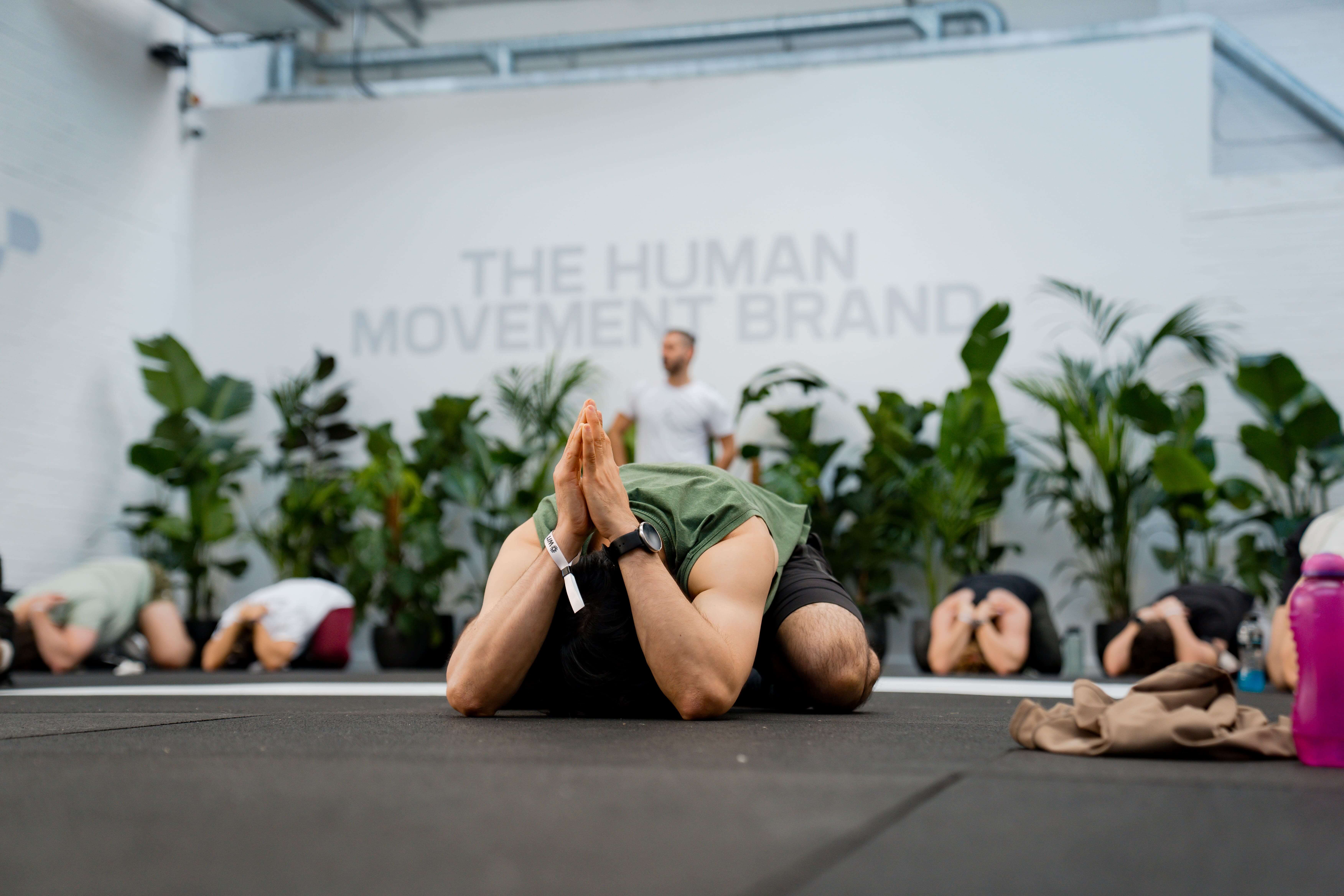
.jpg)

